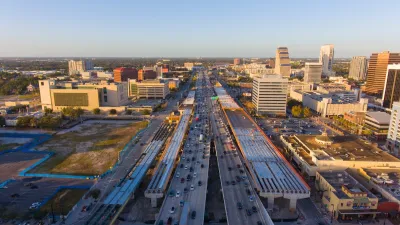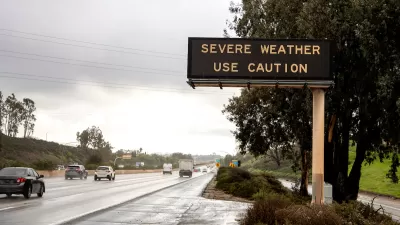An earlier settlement for flood damages incurred by residents of Shiloh, Alabama came with an unexpected condition.

In an article for Inside Climate News, Lee Hedgepeth describes how restrictive deed covenants attached to residential properties in Alabama limit residents’ ability to file actions against the state related to flooding.
“The covenants, released by the Alabama Department of Transportation (ALDOT) in response to a records request by the Southern Environmental Law Center, show that agency officials have been aware of residents’ flooding concerns for years.” Yet residents of Shiloh, a historically Black community, say flooding in their ara began after a 2017 expansion of Interstate 84, which elevated the highway and caused flooding in adjacent properties, displacing residents for months.
When Shiloh residents sought to recover the costs of the damages, they and their attorney agreed to a settlement that, allegedly unbeknownst to the residents, included a restrictive covenant that prevents them or future residents from filing claims about flooding. “The situation in Shiloh recently garnered nationwide attention when Secretary of Transportation Pete Buttigieg visited in April, part of a tour of communities confronting histories of infrastructure decision-making that subjected some residents, who often live in communities of color, to shoulder disproportionate harms from pollution, flooding and abandonment.” For now, Shiloh residents continue to call for increased accountability on the part of ADOT, which says it will try new measures to mitigate flooding and is considering offering to buy out the affected homeowners.
FULL STORY: How Alabama Turned to Restrictive Deed Covenants to Ward Off Flooding Claims From Black Residents

Study: Maui’s Plan to Convert Vacation Rentals to Long-Term Housing Could Cause Nearly $1 Billion Economic Loss
The plan would reduce visitor accommodation by 25,% resulting in 1,900 jobs lost.

North Texas Transit Leaders Tout Benefits of TOD for Growing Region
At a summit focused on transit-oriented development, policymakers discussed how North Texas’ expanded light rail system can serve as a tool for economic growth.

Why Should We Subsidize Public Transportation?
Many public transit agencies face financial stress due to rising costs, declining fare revenue, and declining subsidies. Transit advocates must provide a strong business case for increasing public transit funding.

How to Make US Trains Faster
Changes to boarding platforms and a switch to electric trains could improve U.S. passenger rail service without the added cost of high-speed rail.

Columbia’s Revitalized ‘Loop’ Is a Hub for Local Entrepreneurs
A focus on small businesses is helping a commercial corridor in Columbia, Missouri thrive.

Invasive Insect Threatens Minnesota’s Ash Forests
The Emerald Ash Borer is a rapidly spreading invasive pest threatening Minnesota’s ash trees, and homeowners are encouraged to plant diverse replacement species, avoid moving ash firewood, and monitor for signs of infestation.
Urban Design for Planners 1: Software Tools
This six-course series explores essential urban design concepts using open source software and equips planners with the tools they need to participate fully in the urban design process.
Planning for Universal Design
Learn the tools for implementing Universal Design in planning regulations.
City of Santa Clarita
Ascent Environmental
Institute for Housing and Urban Development Studies (IHS)
City of Grandview
Harvard GSD Executive Education
Toledo-Lucas County Plan Commissions
Salt Lake City
NYU Wagner Graduate School of Public Service




























